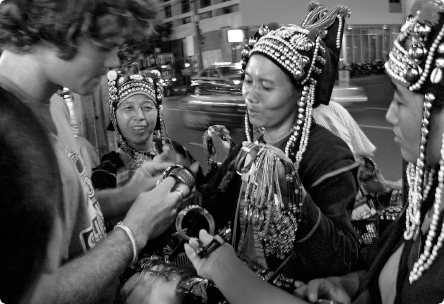Naming

We see the world through the lens of our language.
ARS/USDA
A third important function of verbal communication is naming—that is, creating linguistic symbols for objects. The process of naming is one of humankind’s most profound and unique abilities (Spender, 1984). When we name people, places, objects, and ideas, we create symbols that represent them. We then use these symbols during our interactions with others to communicate meaning about these things. Because of the powerful impact language exerts on our thoughts, the decisions we make about what to name things ultimately determine not just the meanings we exchange but also our perceptions of the people, places, and objects we communicate about. This was why Muhammad Ali decided to abandon his birth name of Cassius Clay. He recognized that our names are the most powerful symbols that define who we are throughout our lives, and he wanted a name that represented his Islamic faith while also renouncing the surname of someone who had, years earlier, enslaved his forebears.

Yet different people from different cultures use different languages.
AP Photo/Richard Vogel
As the Ali example suggests, the issue of naming is especially potent for people who face historical and cultural prejudice, given that others outside the group often label them with derogatory names. Consider the case of gays and lesbians. For many years, gays and lesbians were referred to as “homosexual.” But, as scholar Julia Wood (1998) notes, many people shortened “homosexual” to “homo” and used the new term as an insult. In response, lesbian and gay activists in the 1960s renamed themselves “gay.” This move also triggered disputes, however. Antigay activists protested the use of a term that traditionally meant “joyous and lively.” Some lesbian activists argued that “gay” meant only men and was therefore exclusionary to women. Many straight people began using “gay” as an insult in the same manner as earlier epithets. In the 2000s, the inclusive label of “LGBTQ” (lesbian, gay, bisexual, transgendered, queer) was created to embrace the entire community. But this name still doesn’t adequately represent many people’s self-impressions. One study identified over a dozen different names that individuals chose for their sexual orientation and gender identity, including “pansexual,” “omnisexual,” and “same-gender loving/SGL” (Morrison & McCornack, 2011). Given the way positive names have been turned to negative in the past, some people reject names for nonstraight sexual orientations altogether. As one study respondent put it, “I don’t use labels—I’m not a can of soup!” (Morrison & McCornack, 2011).